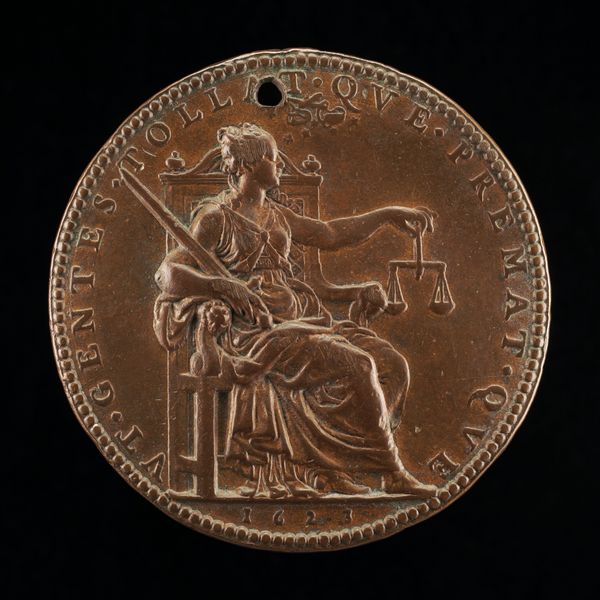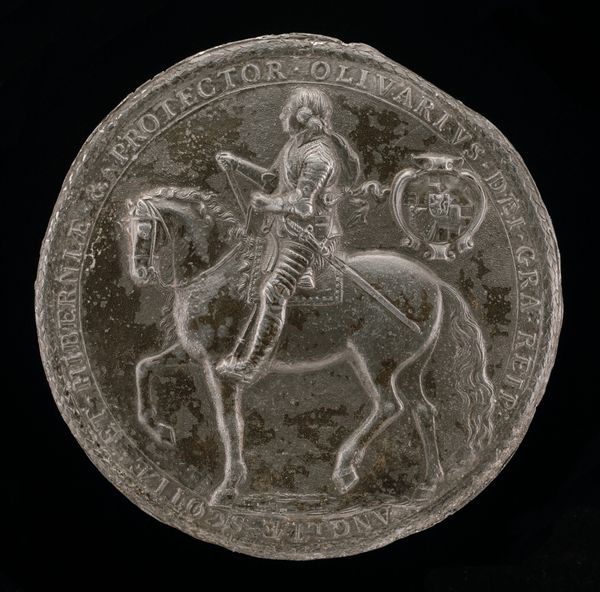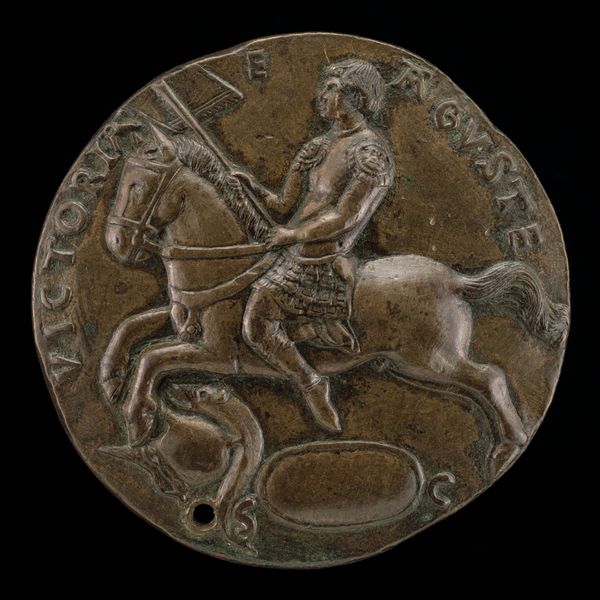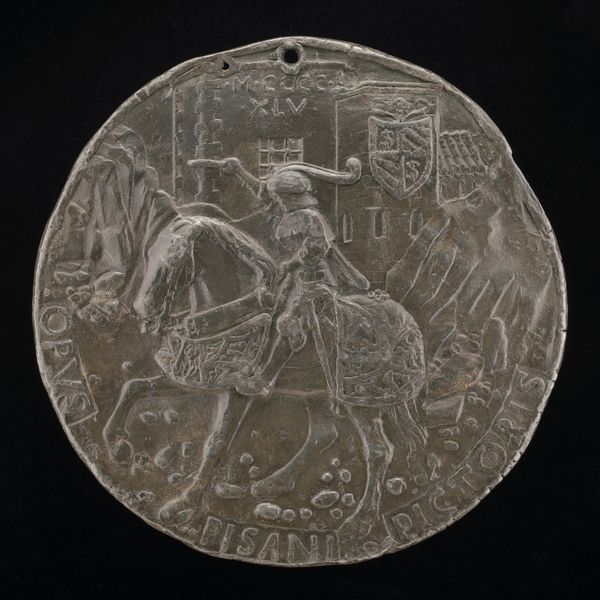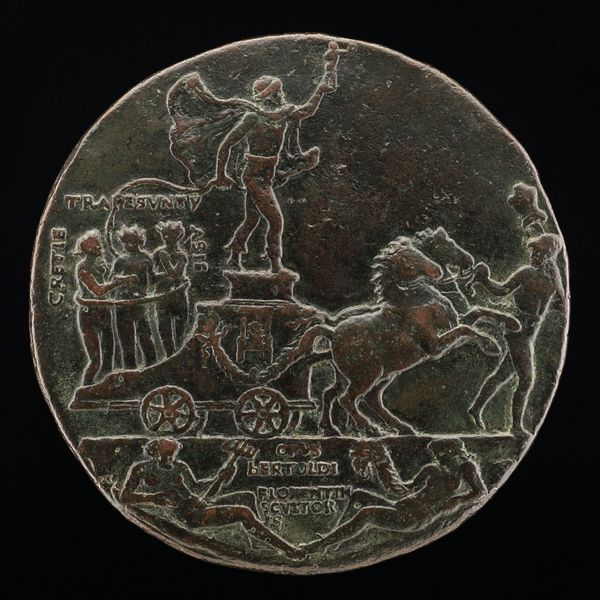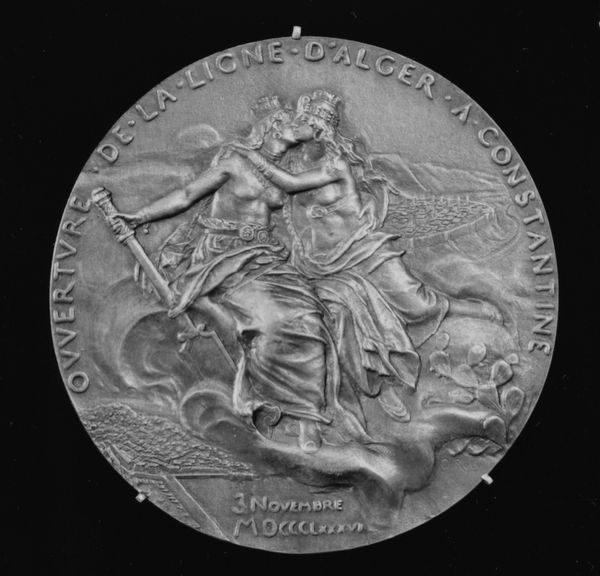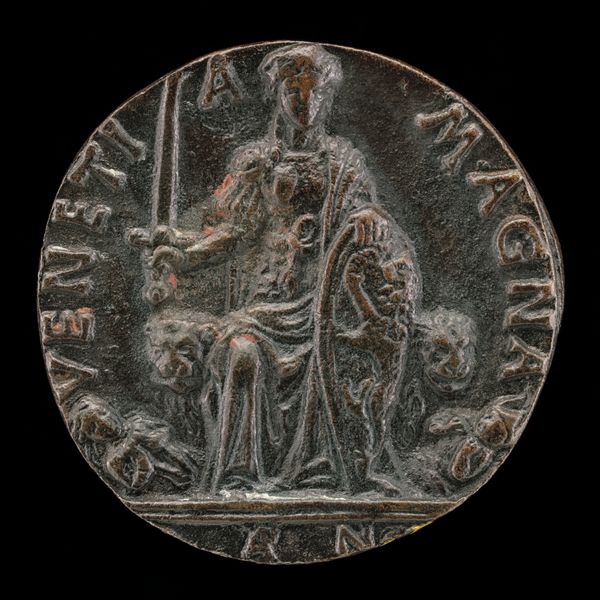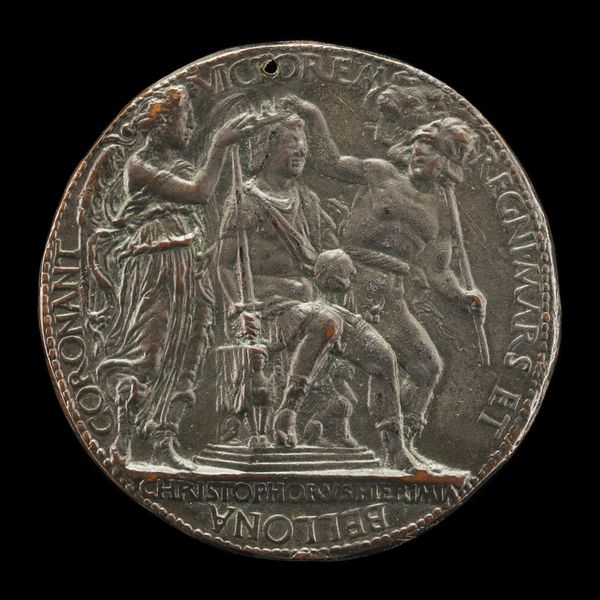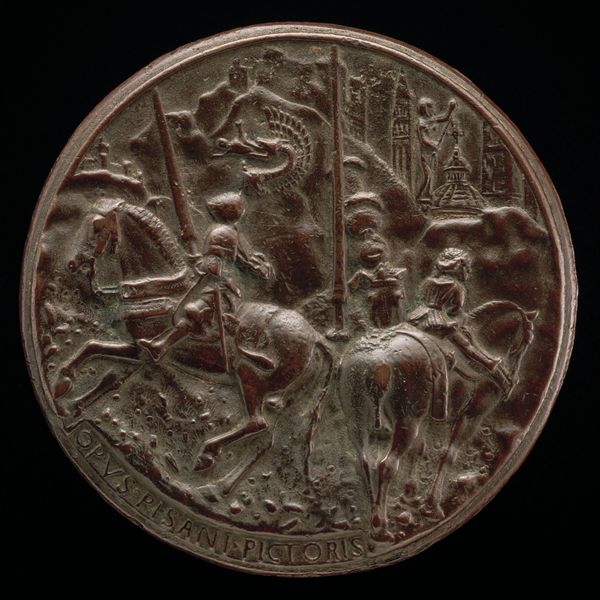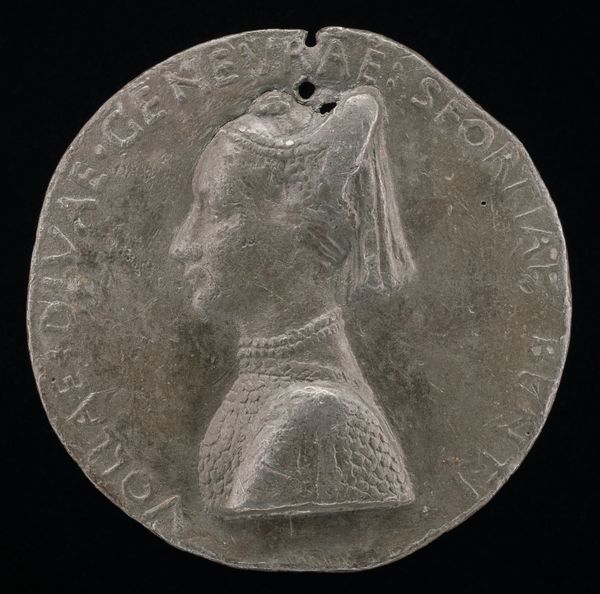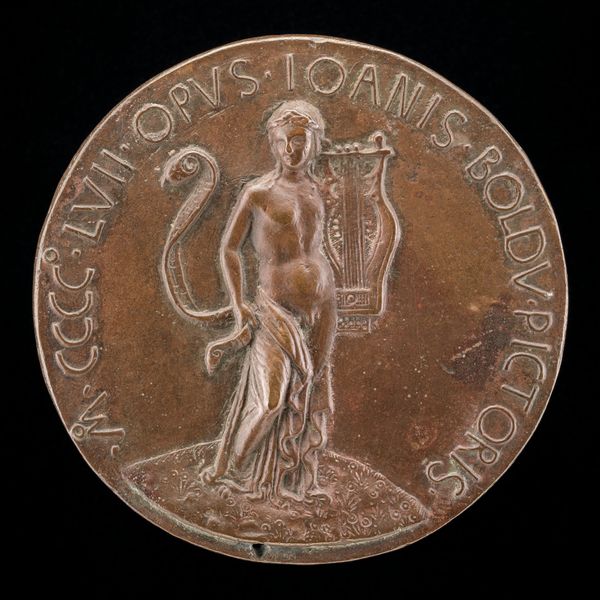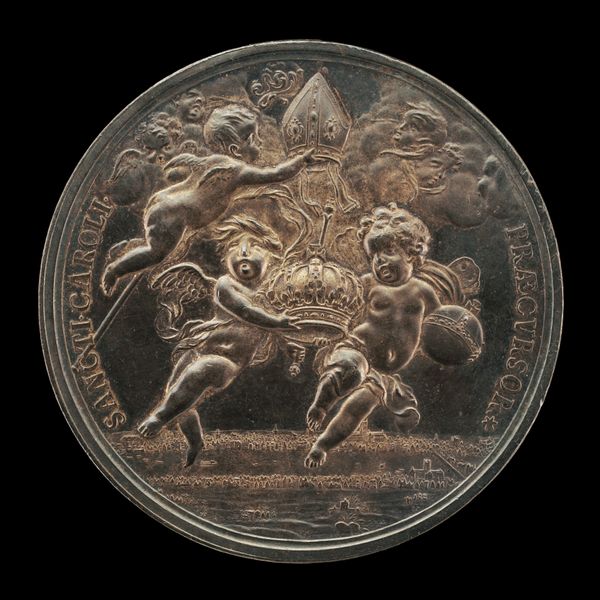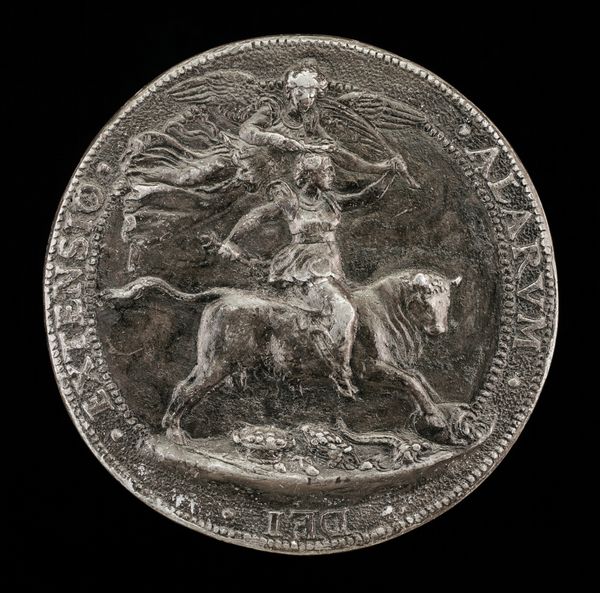![Fortitude Holding a Broken Column [reverse] by Matteo de' Pasti](/_next/image?url=https%3A%2F%2Fd2w8kbdekdi1gv.cloudfront.net%2FeyJidWNrZXQiOiAiYXJ0ZXJhLWltYWdlcy1idWNrZXQiLCAia2V5IjogImFydHdvcmtzLzY2NmQ1ZTM0LThiYmUtNGY5Ni1iNWI0LWU1MTgwYzAxNmVlZC82NjZkNWUzNC04YmJlLTRmOTYtYjViNC1lNTE4MGMwMTZlZWRfZnVsbC5qcGciLCAiZWRpdHMiOiB7InJlc2l6ZSI6IHsid2lkdGgiOiAxOTIwLCAiaGVpZ2h0IjogMTkyMCwgImZpdCI6ICJpbnNpZGUifX19&w=3840&q=75)
relief, bronze, sculpture
#
portrait
#
medal
#
sculpture
#
relief
#
bronze
#
figuration
#
sculpture
#
italian-renaissance
#
gothic
Dimensions: overall (diameter): 8.14 cm (3 3/16 in.) gross weight: 231.44 gr (0.51 lb.) axis: 12:00
Copyright: National Gallery of Art: CC0 1.0
Editor: Here we have Matteo de' Pasti’s bronze relief, “Fortitude Holding a Broken Column [reverse],” created around 1449 or 1450. The figure seated on elephants feels simultaneously regal and burdened, don't you think? What historical currents do you see at play here? Curator: I see this piece as deeply embedded in the visual and political language of the Italian Renaissance. Fortitude, typically a masculine virtue, is embodied here by a crowned female figure. Consider the broken column she grasps. How does that disrupt or reinforce conventional understandings of strength and power, particularly in a patriarchal society? Editor: It suggests a resilience born of damage, almost like she's making strength from what's been shattered. Curator: Precisely. This subversion of traditional imagery allows us to analyze Renaissance ideals through a feminist lens. The elephants themselves—symbols of wisdom and memory—could allude to the weighty legacy of classical antiquity upon which Renaissance thinkers and artists built their world. It raises questions of cultural appropriation, doesn’t it? Who has the right to claim and redefine these symbols? Editor: That's a point I hadn't considered – the reinterpretation being itself a form of power. Does the “reverse” in the title hint at an overturning of values, perhaps? Curator: Potentially. It might suggest that true fortitude isn't brute strength, but the ability to adapt, to endure, and even to rebuild from ruin. Examining the political turmoil within the Italian states at this time can also inform our understanding. Were artists using allegory to engage with fraught political issues? Editor: So, beyond just admiring its beauty, we can read this as a statement on resilience, re-envisioned feminine strength, and the complex relationship with the past. That’s incredibly enriching. Curator: Absolutely. And thinking critically about these contexts, it also helps us to understand not only the historical contexts, but how ideas of gender, power, and appropriation continue to evolve and shape art today.
Comments
No comments
Be the first to comment and join the conversation on the ultimate creative platform.
